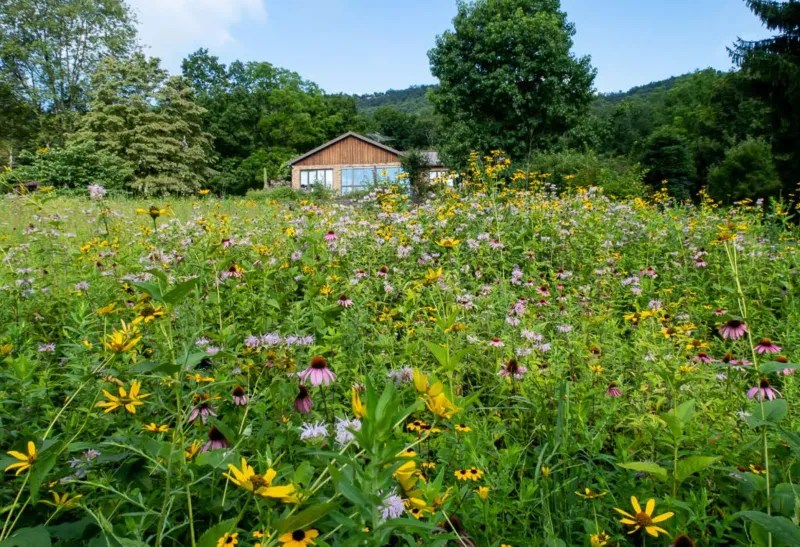grow native plants tender a multitude of benefits not only to the gardener but also to the local ecosystem . These works , being adapt to the regional climate and soil conditions , require less maintenance and resources .
Moreover , crop native flora tolerate local wildlife , advance biodiversity , and enhances the born beauty of landscapes . permit ’s explore seven compelling reasons to squeeze native plants in your garden .
1. Low Maintenance and Resource Efficient
Native plants are of course adapted to the local clime and soil , which means they require significantly less sustentation compared to non - native metal money .
This efficiency reach out to water usage , as they often need less irrigation . In regions where urine preservation is indispensable , this welfare is particularly valuable .
Beyond piddle , native plants are resistant to local pests and diseases , reducing the want for chemical substance fertilizers and pesticides .

This not only make unnecessary time and money for the gardener but also diminish environmental shock . Embracing local botany can lead to a palmy garden with minimal endeavour .
2. Supporting Local Wildlife
aboriginal plants supply substantive resources for local wildlife , offering food , tax shelter , and breeding grounds . Birds , butterflies , and other pollinator trust on these plant to live . By educate native species , gardeners can aid nourish these important creatures .
Moreover , aboriginal plants keep going louse , which form the base of the food chain . A garden rich in aboriginal flora can become a refuge for diverse wildlife , enhancing biodiversity .
This symbiotic family relationship between plant and animals fosters a balanced ecosystem . It further a lively garden ambiance , brim with the sight and sounds of nature .

© Ernst Conservation Seeds
3. Promoting Biodiversity
Biodiversity is crucial for the resiliency of ecosystems , and native plants act a polar role in maintaining it . By growing a kind of aboriginal specie , gardener bestow to preserving genetic diversity and ecological balance .
These plants have evolved alongside local wildlife , form complex relationships that non - aboriginal species can not copy . A diverse plant life residential area supports a wide range of organism , from soil microbe to heavy mammal .
Encouraging biodiversity through native horticulture not only benefits the environment but also creates a vibrant , dynamic garden blank space . It fosters a healthy , self - have ecosystem .

© Audubon Pennsylvania – National Audubon Society
4. Enhancing Natural Beauty
aboriginal industrial plant proffer unequaled artistic qualities that heighten the natural beauty of any landscape .
Their divers shape , people of color , and textures can create arresting visual display that alter with the seasons . This seasonal interest keeps the garden lively and piquant twelvemonth - bout .
Moreover , aboriginal plant often have historical and ethnic significance , adding depth to their collection . By incorporating them into your garden , you celebrate the region ’s raw heritage .

© Dogwood Alliance
The bona fide beauty of aboriginal plants bring a mother wit of place and belong , making your garden a harmonious part of the local environment .
5. Improving Soil Health
Native plants put up significantly to soil health through their deep root systems . These roots help aerate the stain , improve its structure , and enhance water infiltration .
As they grow , native plant also kick in constitutional matter , enrich the ground and further alimental cycling .
sound stain is full of life for hold up flora living and prevent erosion . Native plants stabilize the soil , cut overflow and keep the land ’s integrity .

© Dyck Arboretum
By improving soil health , these plant life support a thriving garden ecosystem . gardener benefit from fertile , springy soil that supports robust plant growth .
6. Resilience to Climate Change
aboriginal plant are naturally resilient to the climate variation of their region . Their adjustment to local conditions take a crap them more capable of withstanding extreme weather event , such as droughts and heavy rains .
By planting native species , gardener can make landscapes that endure vary climate with minimal intervention . These plants ’ resiliency help asseverate garden stability and reduces the need for resource - intensive direction practices .
Embracing native flora is an effective strategy for clime change mitigation , as it foster sustainable , adaptable landscapes that thrive despite environmental challenges .

© Whole Foods Market
7. Reducing Carbon Footprint
Growing native plant can significantly cut a garden ’s C footprint . These plants require fewer imagination , such as water , fertilizers , and pesticide , which get down the overall push consumption associated with garden maintenance .
aboriginal plants also endorse carbon segregation by enhancing filth health and promote rich flora outgrowth . This process captures atmospherical carbon and stores it in the soil , help mitigate climate change .
By choosing native specie , gardeners contribute to environmental sustainability . They make eco - favorable spaces that not only deck their environment but also play a character in reducing greenhouse gas emission .

© Lake County Forest Preserves

© Turfscape